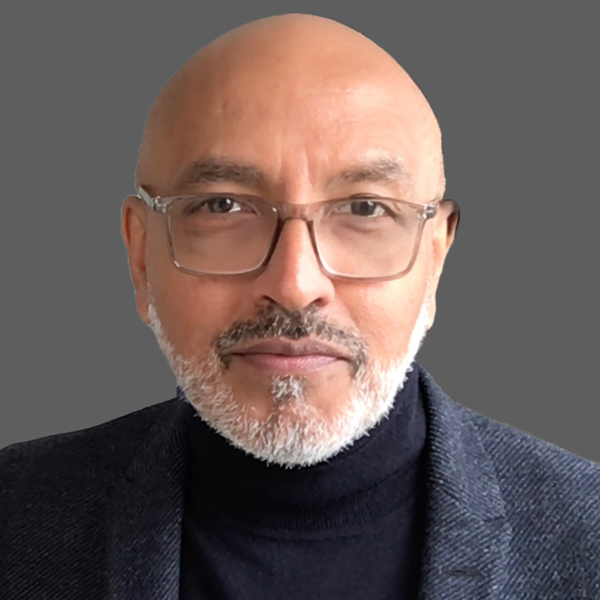

Kauser Kanji
VOD Pro
Share
The TV and OTT world is thrillingly complex.
The glass-to-glass process, for example, the chain of events via which content gets from the first glass (the lens of the camera shooting the footage) to the last glass (the screen on which the viewer watches it) contains 30-40 links including things like: encoding, transcoding, adding metadata, DRM, storage, distribution, MAMs, DAMs, CMSs, conditional access, the media player, adaptive bit rates.
Drill down to just one element, say, advertising, and you find a whole new universe with its own particular vernacular: overnights, measurement, DSPs, SSPs, dynamic ad insertion, programmatic.
It’s no wonder, then, that there are specialists in every field: experts who’ve digested concepts, had hands in the ground, can feel pulses and rhythms.
But zoom out and, if we’ve been working in the industry for a while, we surely know the basics, right? We understand how broadcasters operate; how they do business with the streaming platforms (internal and external); how they make money. Or do we?
The recent news that both Channel 4 and Hearst Networks EMEA were planning to open their own studios made me question my own knowledge. What do broadcaster studios do again exactly? Who do they make TV shows and movies for? Where do they fit in the ecosystem? How do they fit with distribution arms? And why is the building of new studios now, in an environment where AI-generated content will surely only increase in both quality and quantity, an attractive proposition?
I’ve tried to answer some of these questions below.
#1) Channel 4 and Hearst Networks EMEA Step onto the Lot
Both Channel 4 and Hearst Networks EMEA have recently confirmed plans to establish in-house studio operations. At Channel 4, the intention is to create a commercially separate production business capable of making programmes for both C4 and third-party buyers. Interim CEO Jonathan Allan discussed the move at the RTS Cambridge Convention and in subsequent coverage, describing it as a way to strengthen the broadcaster’s long-term sustainability.
Hearst Networks EMEA has announced Hearst Canvas, a new content development arm that will commission and originate unscripted formats across video, audio and social platforms, building on its existing digital brands.
#2) Why?
At its simplest, this is about business diversification and control of rights. Channel 4 has traditionally operated as a publisher-broadcaster: commissioning content externally (as required by its statutory / regulatory obligations) rather than producing it in-house. That model has given rise to a strong indie sector but has also limited C4’s ability to own and monetise IP.
Hearst’s motivation is similar. In a post on LinkedIn, the company said:
“Building upon the success of our award-winning short-form series, such as Unbreakable, Ex-Con Carpenters, Cut to the Crime, and Two Sides of History, Hearst Canvas seeks to explore new avenues to reach and engage new audiences in the evolving digital landscape.”
In both cases, owning a studio means owning the back end: secondary rights, international sales, and format exports.
#3) Why Now?
Several conditions align:
- Advertising volatility: linear and digital ad markets are unpredictable; production income is steadier
- Post-pandemic cost correction: crew availability and facility pricing have normalised
- Commissioning slowdown: global streamers have reduced spend, freeing talent capacity
- Technology shifts: AI, virtual production and cloud workflows reduce entry barriers
- Policy headroom: following the conclusion of the privatisation debate, Channel 4 has greater room to expand commercially within its remit.
Together, these create a pragmatic window for building new production capability.
#4) The numbers they’ll have looked at
The success of ITV Studios and BBC Studios provides the most obvious reference point.
| Year | ITV Studios Revenue (£m) | BBC Studios Revenue (£m) |
|---|---|---|
| 2018/19 | 1,670 | 1,373 |
| 2022/23 | 2,170 | 2,090 |
| 2023/24 | 2,038 | 1,837 |
| 2024/25 | — | 2,200 |
Both operations now generate around £2 billion annually, contributing roughly half of their parent companies’ profits. ITV Studios typically achieves 12–15 % adjusted EBITA (Earnings Before Interest, Taxes, and Amortisation) margins; BBC Studios’ operating margins range between 8–12%.
These are solid, repeatable businesses built on rights ownership and international distribution.
#5) Where the New Studios Sit
For Channel 4, a studio arm would complement its commissioning model rather than replace it. It offers a route to build assets on the balance sheet, retain IP on selected titles, and reduce dependency on advertising revenue.
For Hearst Networks EMEA, the goal is to extend its media brands into screen formats and create long-tail content value across multiple platforms. The company already distributes video through FAST and social; Canvas provides a mechanism to originate rather than simply aggregate.
#6) Risks and Constraints
Running a studio is capital-intensive. Cashflow is irregular and hit-rate risk is high. Channel 4 also has to manage its relationship with the UK indie sector. The broadcaster has already indicated that its commissioning teams and production unit will be structurally separated, but the optics will matter.
The other emerging factor is AI. New, highly automated production pipelines are beginning to generate short-form and factual content at scale. If traditional studios fail to adopt these tools – for localisation, editing, and asset reuse – they risk being undercut on speed and cost.
The AI Challenge:
AI-assisted studios are no longer theoretical. Synthetic presenters, automated dubbing, and text-to-video systems are moving into early commercial use. Broadcaster-owned studios can retain an edge by combining automation with trusted editorial oversight and regulated standards – an area where brand reputation and compliance still matter. The immediate opportunity is efficiency: use AI to lower cost-per-hour and accelerate production cycles without compromising creative integrity.
#7) Evolving Models
The next phase of studio development will be hybrid by design:
- Human-led for premium scripted and live formats
- AI-augmented for factual and entertainment programming
- Automated for digital-first, short-form, and social video.
Broadcaster studios hold specific advantages: established brand credibility in a market where synthetic content is proliferating, distribution reach across linear, BVOD and FAST, and extensive archives and IP ready for repurposing. Those are the ingredients that could make Channel 4 Studios and Hearst Canvas viable provided they’re built with technology and rights exploitation at their core, not as symbolic extensions of legacy brands.
Final Thought
The rationale for new studios is clear: own more of the value chain, smooth revenue cycles, and capture export upside. The challenge will be execution. Studios can be stabilisers or distractions. Success will depend on whether these new ventures are run as integrated, data-driven businesses or as traditional production units wearing new badges.
ABOUT KAUSER KANJI
Kauser Kanji has been working in online video for 20 years, formerly at Virgin Media and NBC Universal, and founded VOD Professional in 2011. He has since completed major OTT projects for, amongst others, A+E Networks, the BBC, BBC Studios, Channel 4, DR (Denmark), Liberty Global, Netflix, Sony Pictures, the Swiss Broadcasting Corporation and UKTV. He now writes industry analyses, hosts an online debate show, OTT Question Time, as well as its in-person sister event, OTT Question Time Live.
